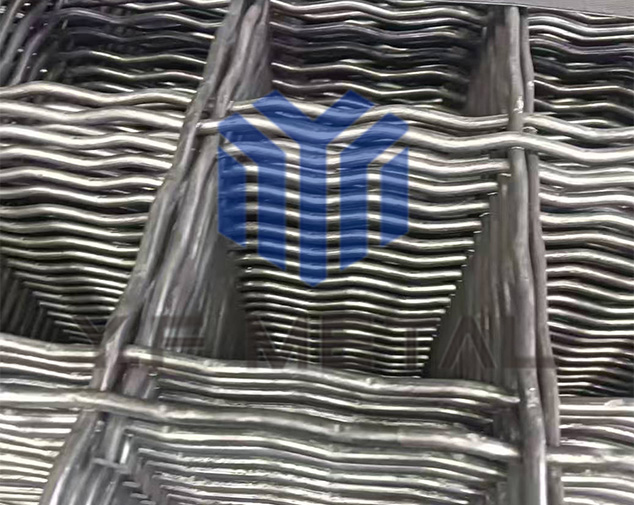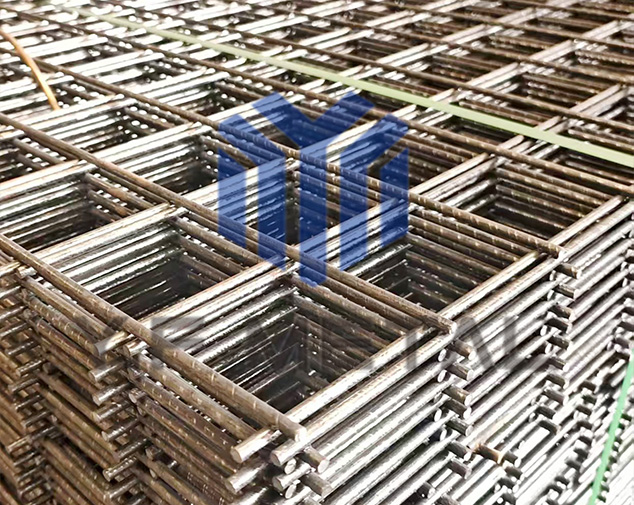Benefits & Features
Introduction:
Welded steel mesh for reinforced concrete is a factory-made steel mesh welded from cold-rolled ribbed steel bars or cold-rolled plain round bars. It is an excellent and efficient material for concrete reinforcement. Its emergence is of great significance in improving construction efficiency, structural quality, safety, and reliability, and in transforming traditional construction methods. It can be used for reinforcement in reinforced concrete structures and as ordinary reinforcement in prestressed concrete structures. To standardize the production and application of this material and promote the industrialization of my country’s construction industry, the industry standard YB/T076-1995 was formulated.
Definition:
1. Cold-rolled plain steel bar: Plain steel bar produced by cold-rolling or cold-drawing hot-rolled round wire rod and then cold-reducing it. It typically has a circular cross-section.
2. Longitudinal steel bar: Steel bars arranged parallel to the fabrication direction of the steel mesh.
3. Transverse steel bar: Steel bars arranged perpendicular to the fabrication direction of the steel mesh.
4. Spacing: The distance between the centerlines of adjacent bars in the steel mesh. For double bars, the centerline is the common tangent line at the contact point between the two bars. 5. Double Rebar: Two rebars of the same type and diameter placed close together in a mesh.
6. Overhang: The length of each longitudinal and transverse rebar extending beyond the centerline of the outermost transverse and longitudinal rebars. For double rebars, the centerline is the common tangent line between the contact points of the two rebars.
7. Mesh Length: The dimension of the long side of the mesh (regardless of the manufacturing orientation).
8. Mesh Width: The dimension of the short side of the mesh (regardless of the manufacturing orientation).
Manufacturing:
1. The mesh should be machine-made, with longitudinal and transverse rebar intersections welded using resistance welding.
2. The number of open welds at rebar intersections must not exceed 1% of the total number of intersections in the mesh. Furthermore, the number of open welds on any one rebar must not exceed half of the total number of intersections on that rebar. Open welds are not permitted at the outermost intersections of the mesh. Mechanical and Processing Properties:
1. The mechanical and bending properties of the steel mesh shall comply with the requirements of GB/T 13788 for LL550 grade cold-rolled ribbed steel bars and Table A for LG550 grade cold-rolled plain steel bars, respectively.
2. The shear resistance (in N) of the steel mesh welds shall be no less than 150 times the nominal cross-sectional area (in mm) of the thicker steel bar.
Packaging:
The steel mesh should be neatly and securely bundled. The bundle weight should not exceed 2 tons. Rigid supports or brackets should be provided if necessary to prevent deformation that could affect the mesh during transportation and lifting.
Applications:
1. Application of Welded Steel Mesh in Highway Cement Concrete Pavement Engineering
When using cold-rolled ribbed steel bars, the steel bar diameter should be no less than 8mm, the longitudinal reinforcement spacing should be no more than 200mm, and the transverse reinforcement spacing should be no more than 300mm. The longitudinal and transverse reinforcements of the welded mesh should have the same diameter, and the steel cover thickness should be no less than 50mm. Welded mesh used for reinforced concrete pavement reinforcement can be manufactured in accordance with the relevant regulations for welded mesh used for reinforced concrete pavements. (1) When force bars cannot be installed in expansion joints connecting concrete pavements and fixed structures, a double layer of welded steel mesh can be installed within the slab ends of the adjacent structure; or the slab thickness can be gradually increased by 20% over a length range of approximately 6 to 10 times the slab thickness.
(2) When a concrete pavement connects to a bridge with a slab at the bridgehead, a reinforced concrete surface transition plate 6 to 10 mm long should be installed between the slab and the concrete surface slab. When the bridge is skewed, the sharp angles of the reinforced concrete slab should be reinforced with welded steel mesh.
(3) When a box-shaped structure passes horizontally beneath the concrete surface layer, and the distance from its top surface to the bottom surface is less than 400 mm or it is embedded in the base layer, a double layer of welded steel mesh should be installed within the concrete surface layer along the top width and sides of the structure, with the upper and lower layers of welded steel mesh positioned 1/4 to 1/3 of the thickness of the top and bottom surfaces, respectively. If a circular tubular structure crosses the concrete surface layer and the distance from its top to the bottom is less than 1200mm, a single layer of welded steel mesh should be laid within the concrete surface layer on both sides of the structure, positioned 1/4 to 1/3 of the thickness from the top of the surface layer.
2. Application of Welded Steel Mesh in Bridge Engineering
It is primarily used in bridge deck pavement for municipal and highway bridges, renovation of existing bridge decks, and crack prevention for bridge piers. Quality inspections of thousands of domestic bridge applications have shown that the use of welded mesh significantly improves the quality of bridge deck pavement, with a pass rate of over 97% for protective layer thickness. This improves bridge deck flatness, makes the deck virtually crack-free, increases paving speed by over 50%, and reduces bridge deck pavement construction costs by approximately 10%. Welded mesh or pre-assembled cold-rolled ribbed welded mesh should be used for bridge deck pavement; tied welded mesh is not recommended. The diameter and spacing of welded mesh for bridge deck pavement should be determined based on the bridge structure and load rating. The spacing between welded steel meshes can be 100-200mm, and their diameters should range from 6-100mm. Welded meshes should be spaced evenly in the longitudinal and transverse directions, and the protective layer thickness between the welded mesh and the top surface should be at least 20mm.
3. Application of Welded Steel Mesh in Tunnel Lining
Ribbed welded steel mesh should be installed within shotcrete to improve the shear and flexural strength of shotcrete, enhance its punching and bending resistance, improve its integrity, reduce shrinkage cracking, and prevent localized chipping. The welded steel mesh grid should be arranged in a rectangular pattern, with spacing between bars ranging from 150-300mm. Suitable combinations include 150mm×150mm, 200mm×200mm, 200mm×250mm, 250mm×300mm, and 300mm×300mm. The overlap length of the welded steel mesh should be at least 30d (d is the bar diameter). The thickness of the sprayed concrete protective layer of the welded steel mesh shall not be less than 20mm. When using double-layer welded steel mesh, the spacing between the two layers of welded steel mesh shall not be less than 60mm.









